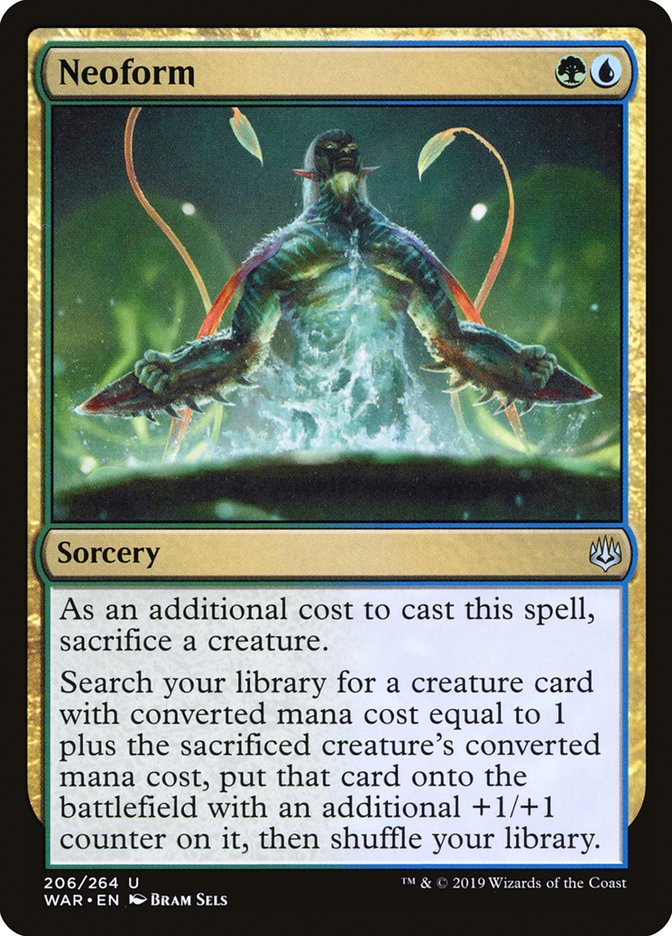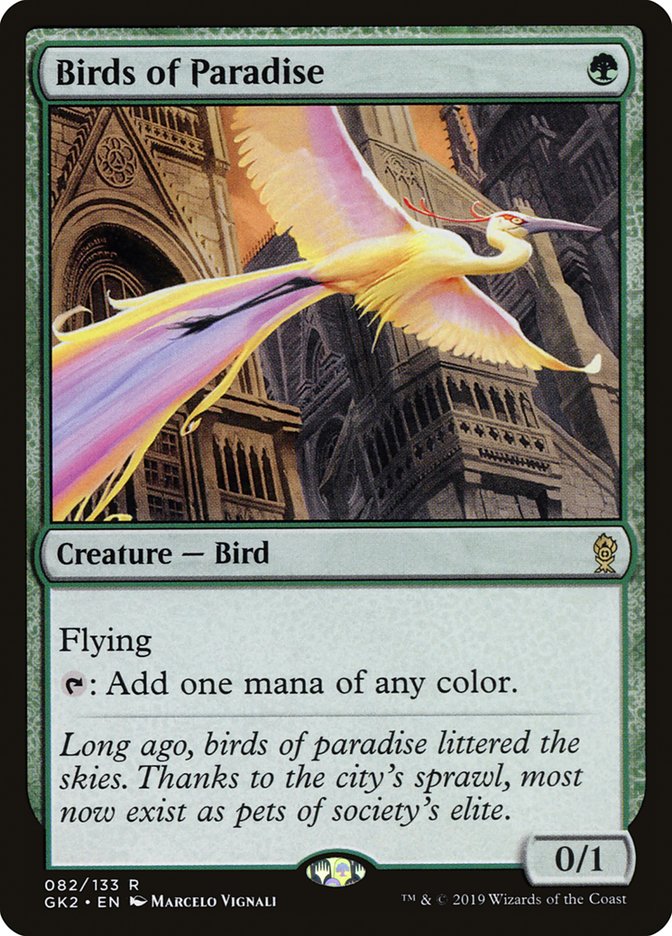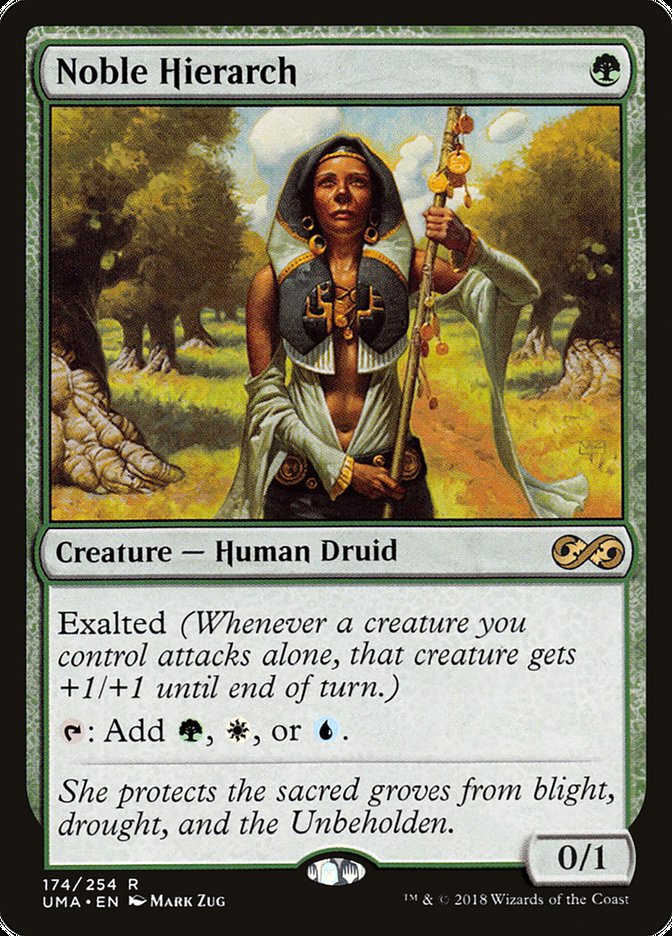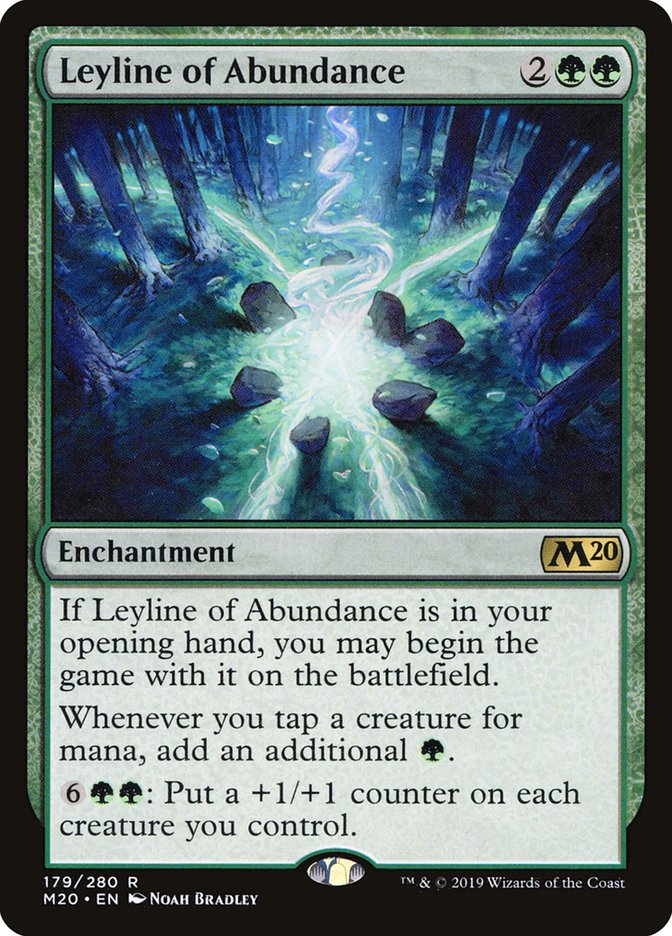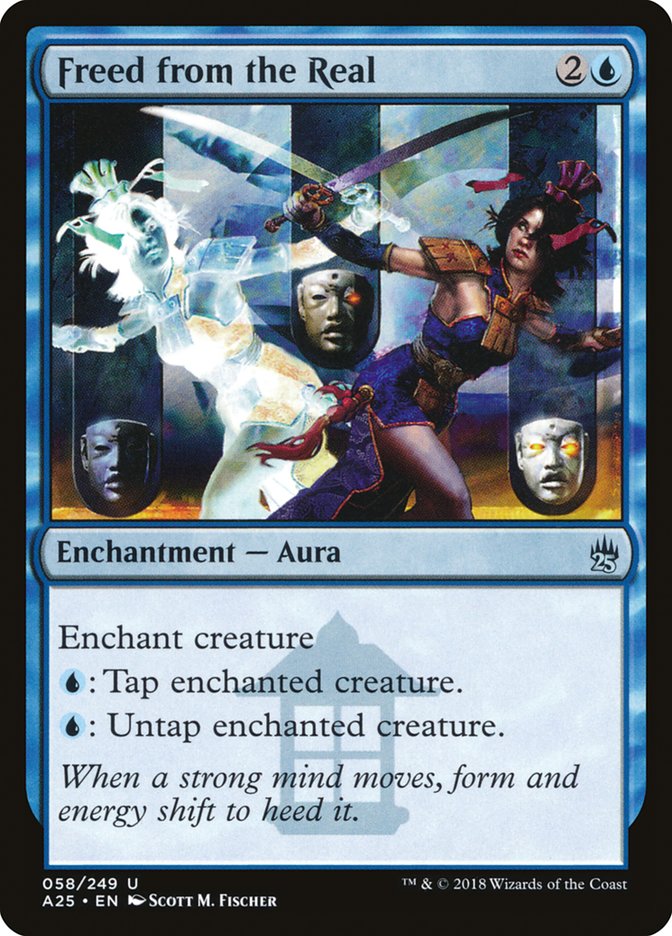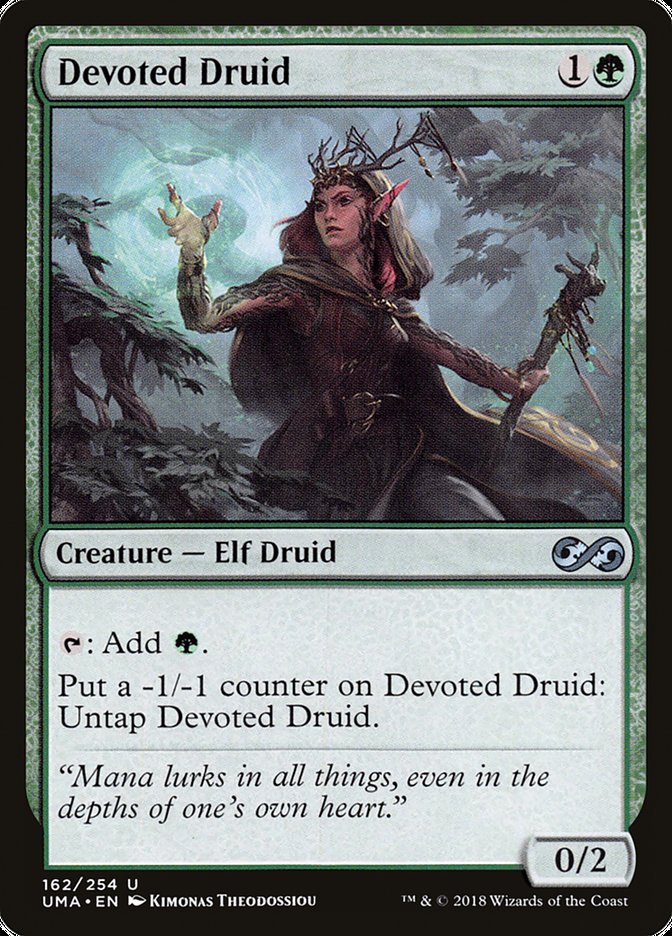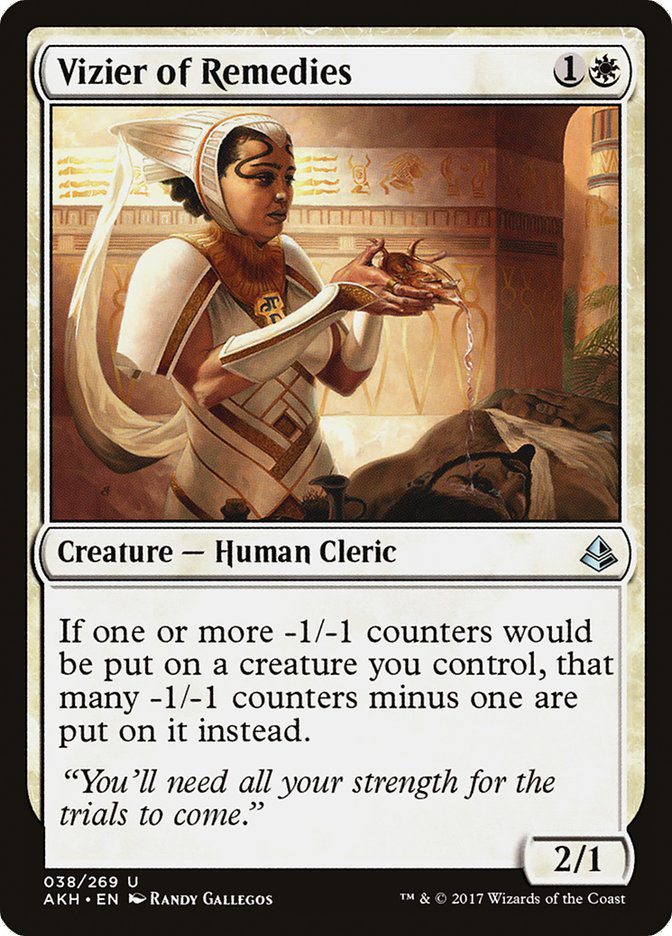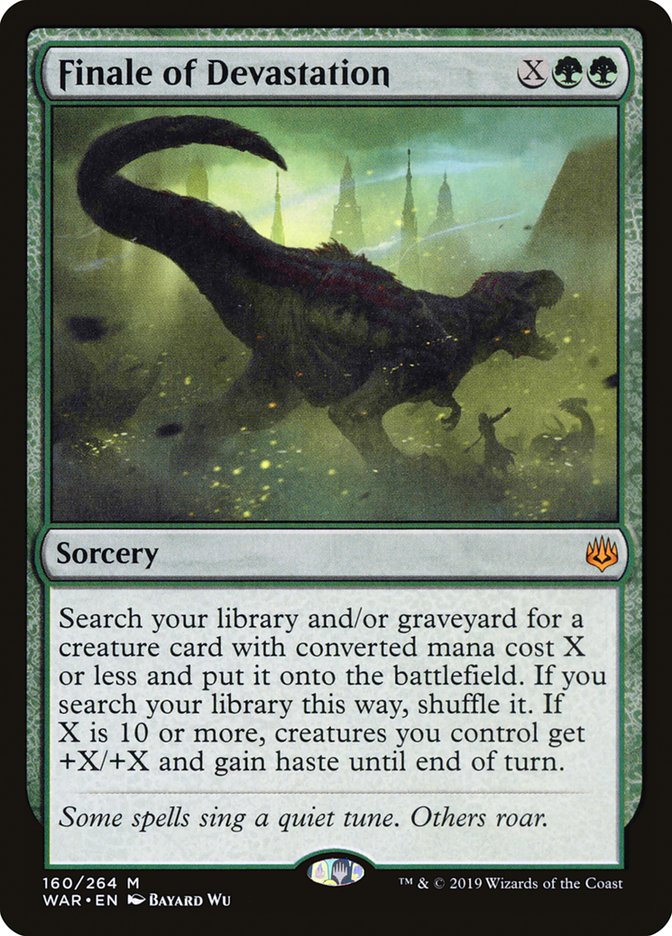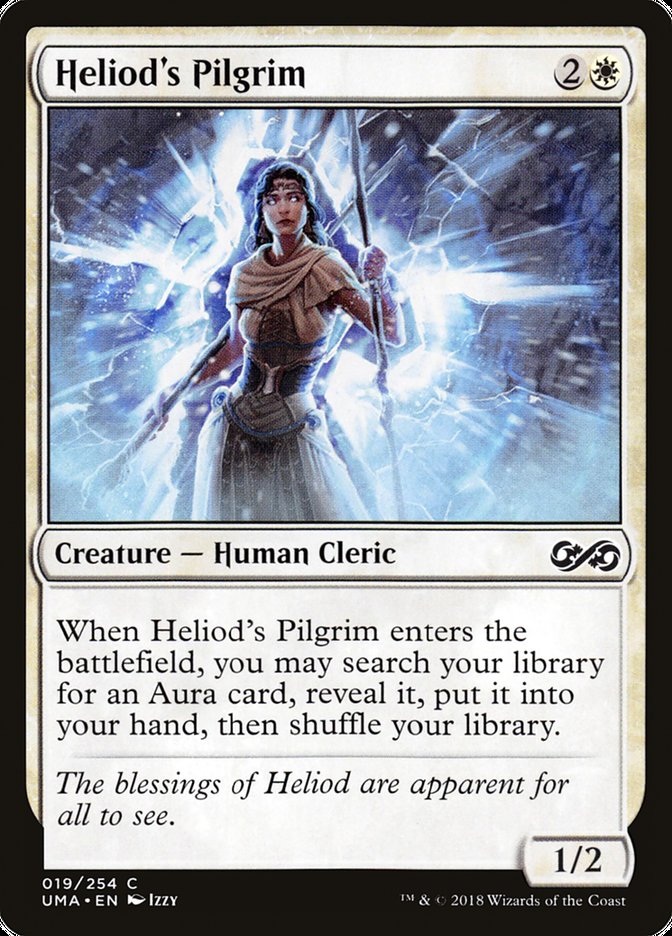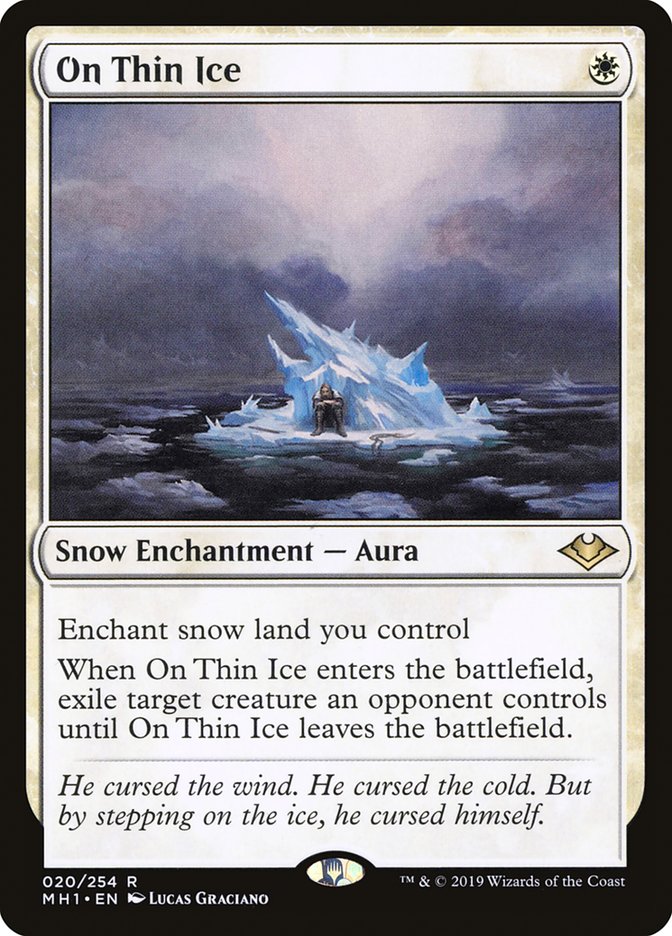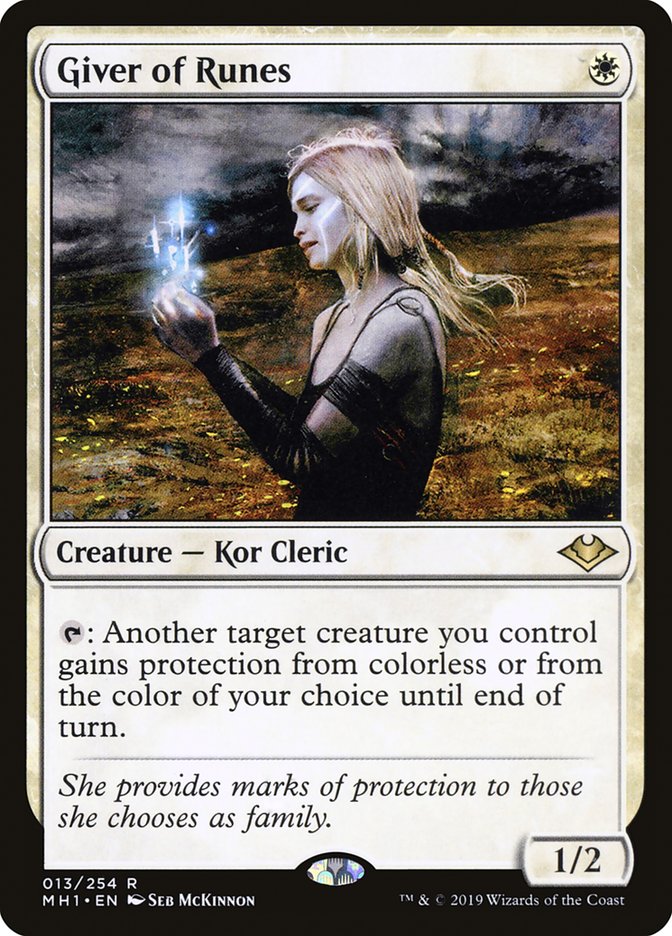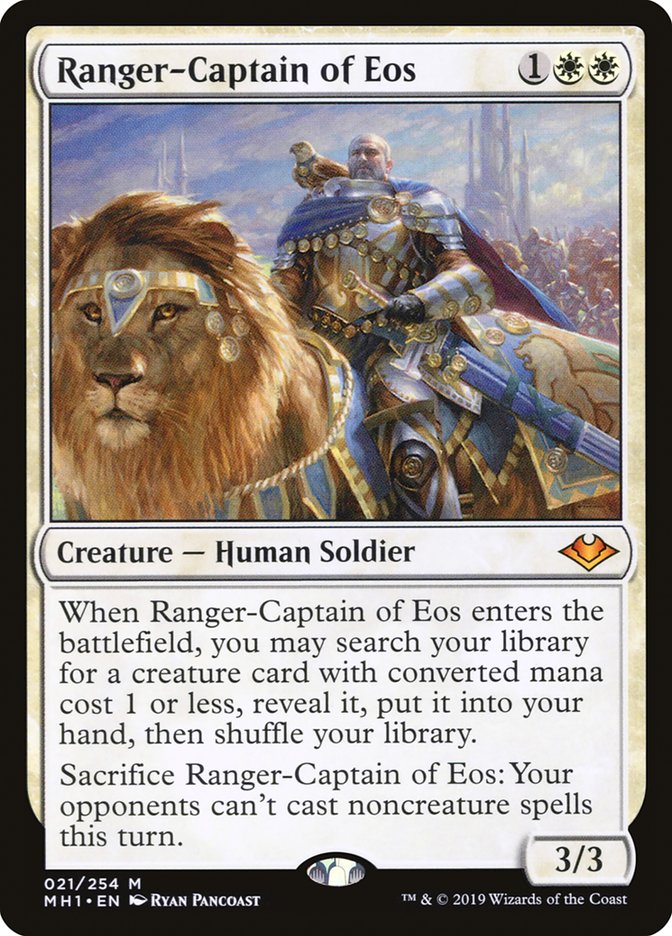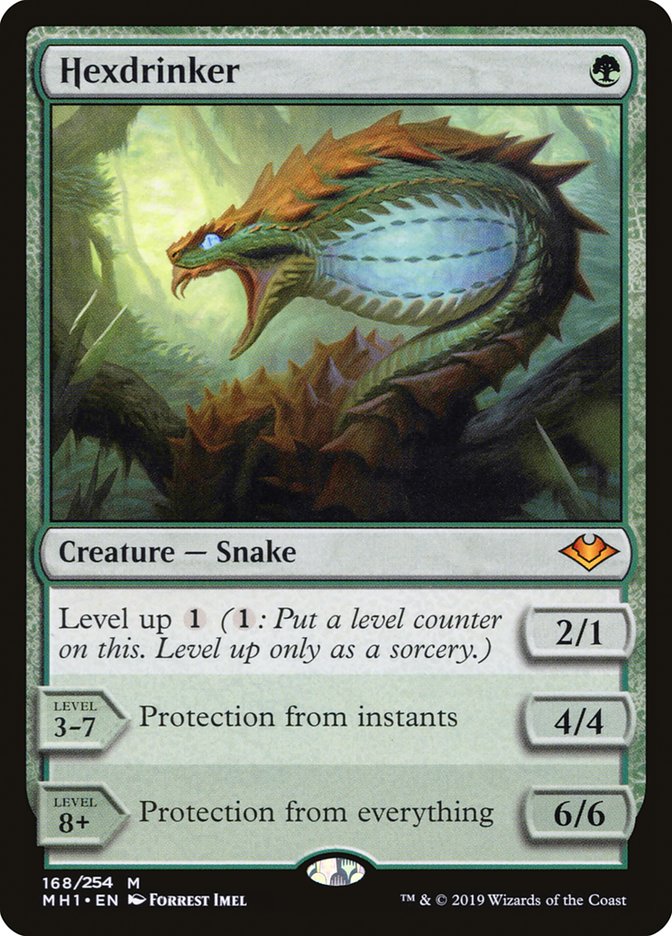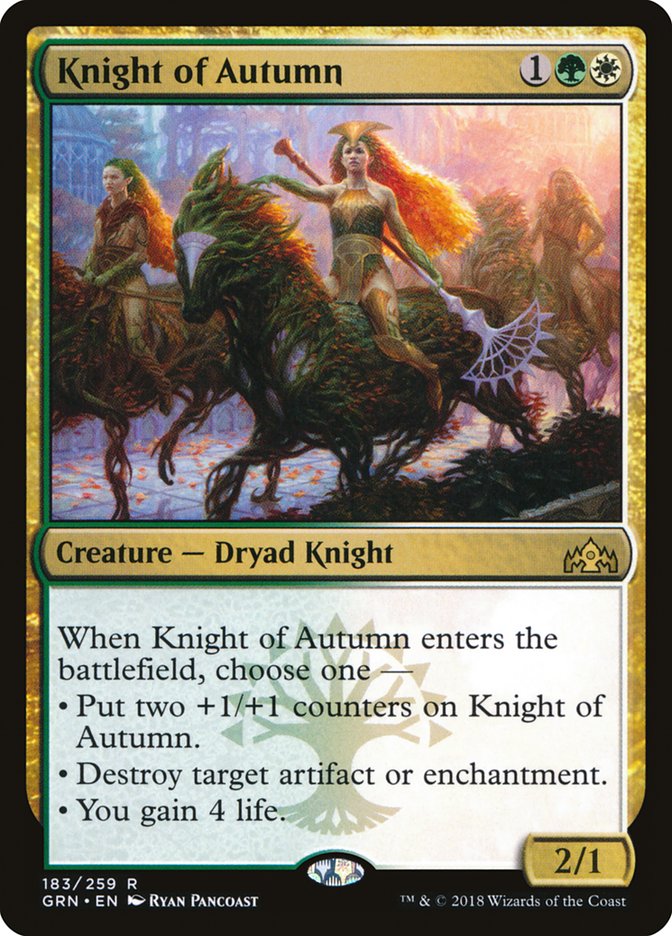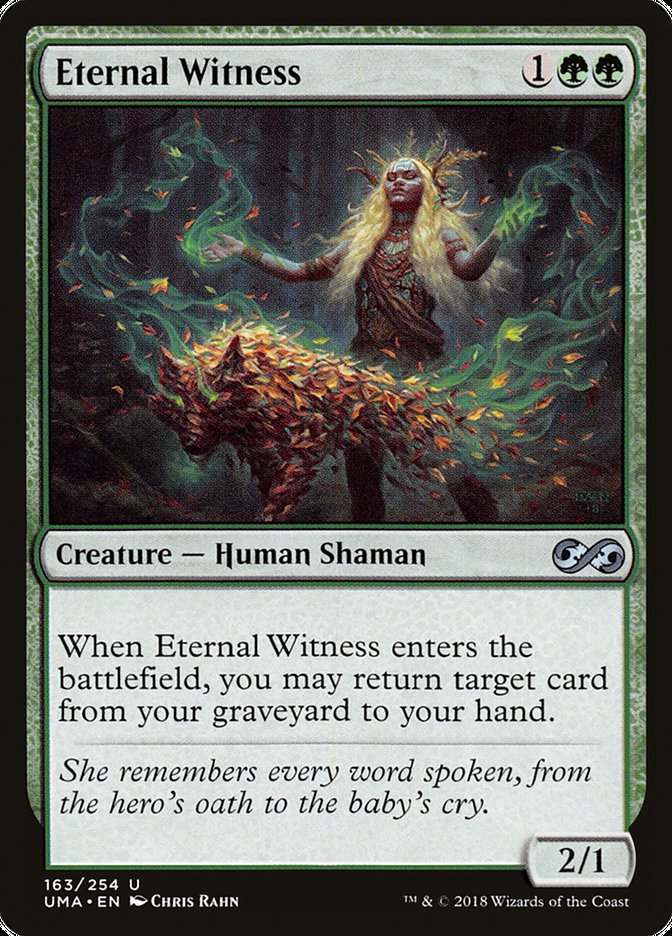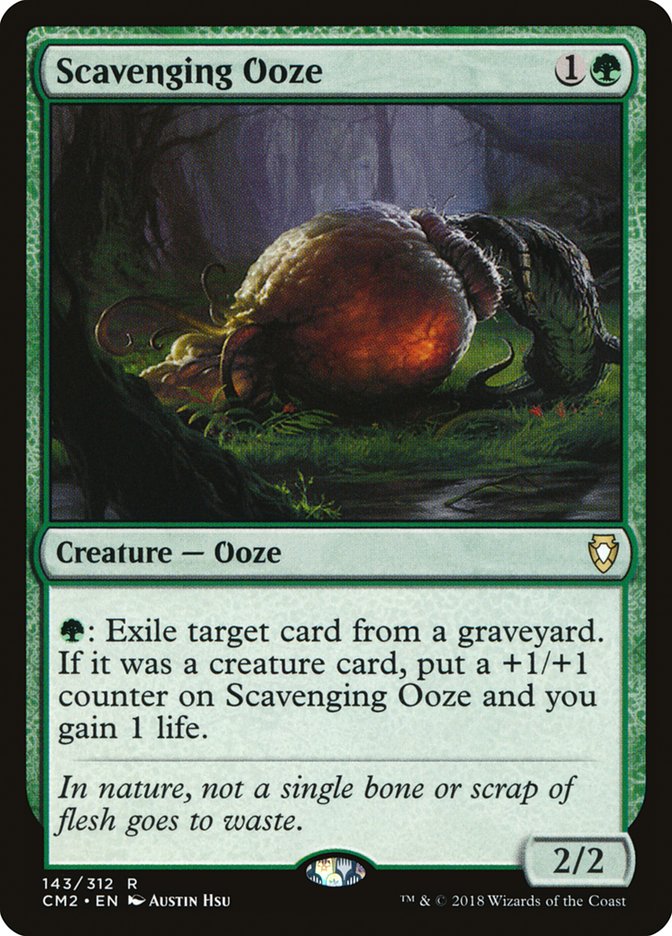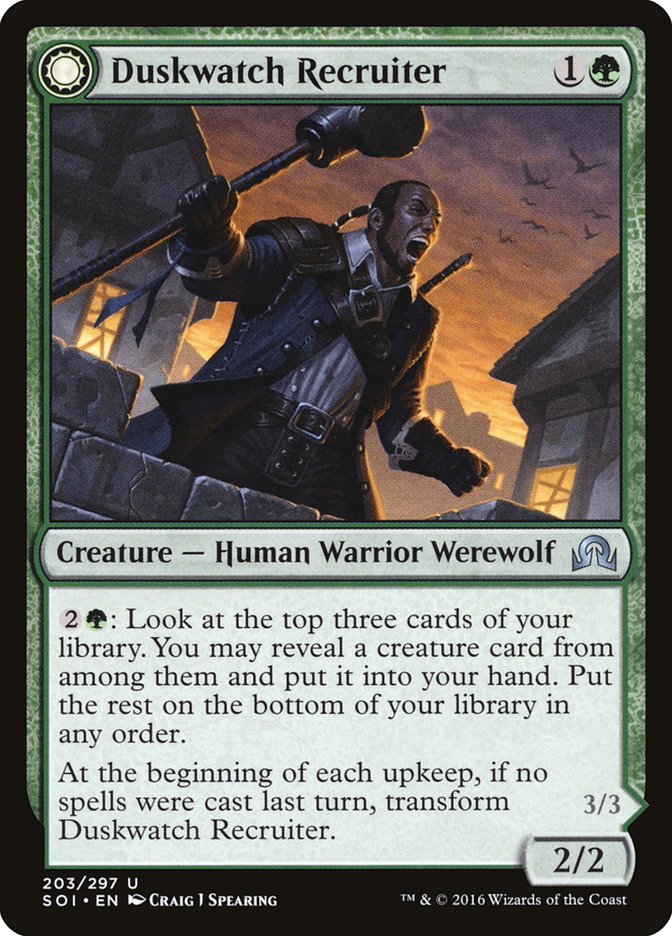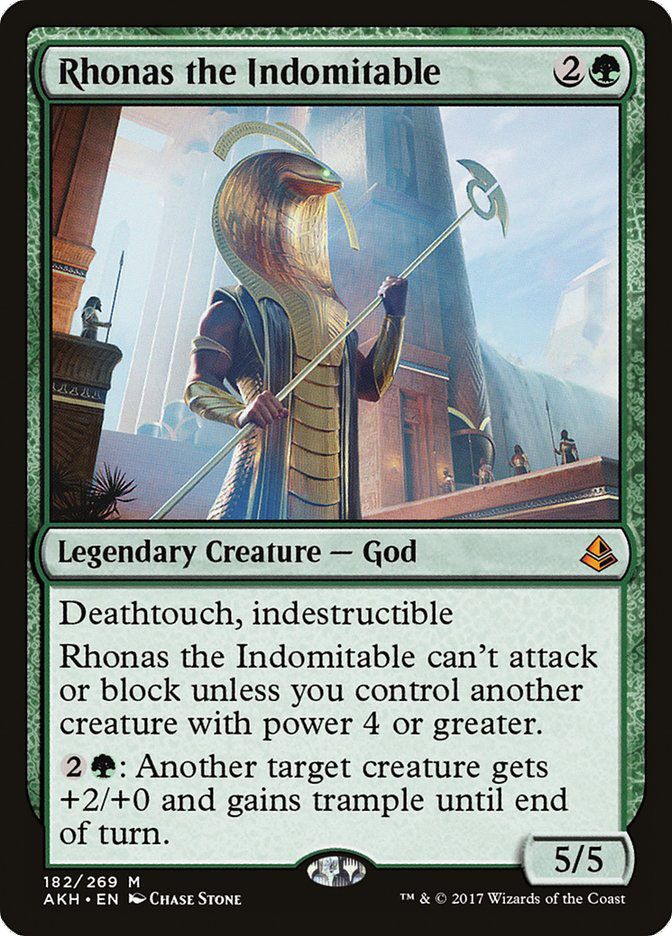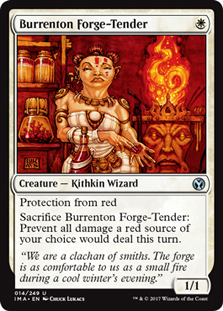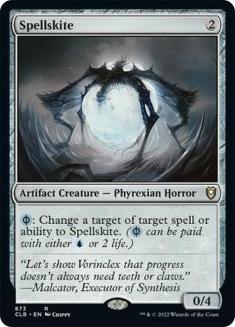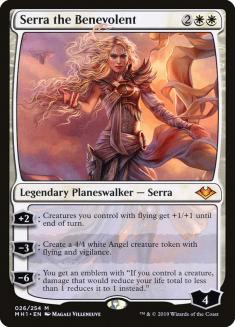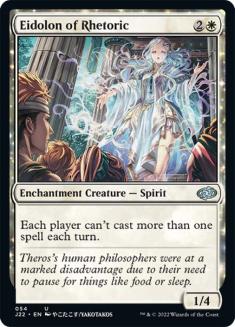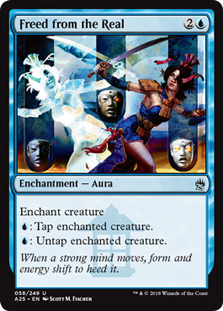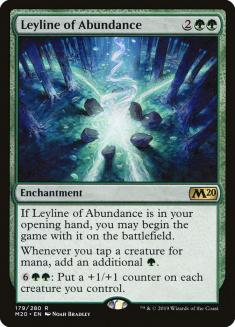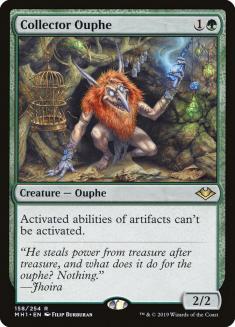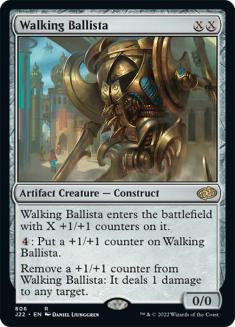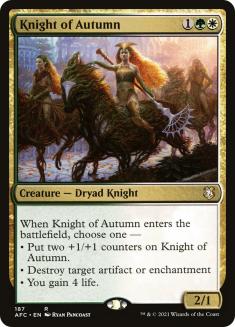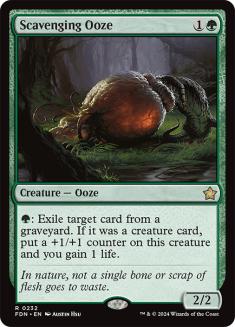We’re now officially over the “Modern is a Turn 4 Format” fallacy, right? A banning just swept the legs of the latest Turn 3 menace to rise to the top of the most degenerate format in Magic, but we’re just one good tournament result away from another contender rising up to turn the format on its ear. After all, the banning left a deck with a legitimate shot at a Turn 1 kill completely untouched.
Creatures (18)
- 2 Autochthon Wurm
- 1 Wild Cantor
- 4 Allosaurus Rider
- 4 Simian Spirit Guide
- 4 Chancellor of the Tangle
- 1 Laboratory Maniac
- 2 Griselbrand
Lands (13)
Spells (29)
- 4 Nourishing Shoal
- 4 Serum Visions
- 1 Edge of Autumn
- 3 Pact of Negation
- 4 Summoner's Pact
- 4 Manamorphose
- 4 Eldritch Evolution
- 1 Life Goes On
- 4 Neoform
Sideboard

Neobrand has even picked up solid prints in the last two sets, adding Waterlogged Grove and Veil of Summer to its quiver at the same time the London Mulligan came into permanent usage.
Adoption of this archetype has been sparse, and it’s not hard to see why. The deck has had ban talk surrounding it basically since its inception, solely based on its horrific play patterns. Games of Modern just shouldn’t end on Turn 1. Beyond that, I don’t know many folks who would really enjoy playing a day full of Neobrand.
At Mythic Championship IV in a few weeks, none of those concerns will hold water. If Neobrand gives players the best chance of winning, they will play it regardless of buy-in risks or enjoyment.
My prediction? Regardless of Turn 1 kill potential, the deck is just too inconsistent, even with the London Mulligan. It loses to itself too often to convince people to hand their Mythic Championship fates to a game of Solitaire. Brokenness only seems to reach a problematic (read: ban-worthy) state in Modern when a combo comes with a consistent and reasonable “Plan B” (Bridgevine, Birthing Pod) or the combo in question has an incredible amount of redundancy (early Storm decks, Amulet Bloom, Golgari Grave-Troll Dredge). Sheer speed like we’ve seen with Neobrand and Grishoalbrand has never been enough on its own to seal a deck’s fate.
So here’s a new combo deck that can kill on Turn 2 with a reasonable toolbox “Plan B” and a preposterous amount of redundancy in its combo pieces.
Creatures (30)
- 4 Birds of Paradise
- 1 Eternal Witness
- 4 Devoted Druid
- 4 Noble Hierarch
- 1 Scavenging Ooze
- 3 Heliod's Pilgrim
- 1 Reflector Mage
- 1 Duskwatch Recruiter
- 1 Rhonas the Indomitable
- 4 Vizier of Remedies
- 1 Knight of Autumn
- 3 Giver of Runes
- 1 Ranger-Captain of Eos
- 1 Hexdrinker
Lands (18)
Spells (12)

My friends Connor Bryant and Max Brown were the first to let me know that they were getting up to some shenanigans in the Modern queues, and while their first list was playing a little too fair for my tastes with cards like Knight of the Reliquary and Spell Queller, there was no denying they had picked up on a powerful combo. It goes as follows:
- Turn 0: Put Leyline of Abundance onto the battlefield.
- Turn 1: Cast Noble Hierarch or Birds of Paradise.
- Turn 2: Enchant the creature with Freed from the Real. Make your second land drop and untap that creature. Well played.
Once you’ve suited up your Noble Hierarch or Birds of Paradise, you’ve got infinite green mana, and you’ve also got access to an arbitrarily large Bird or Human via Leyline of Abundance’s activated ability. This combo is no bigger in terms of footprint than the now-classic Devoted Druid / Vizier of Remedies combo, since that requires some third card to dump your mana into. With this new combo in place, the task becomes figuring out how to install as much resiliency and redundancy as possible around these pieces.
Card-by-card breakdowns are a tricky thing to do well, since all too often they veer into “just reading the card” territory. In this case however, I think looking at individual cards best illustrates the many overlapping plans the deck has access to.
Our first combo, and the package that has the potential to really upgrade the power level of existing infinite mana green decks. Obviously Leyline of Abundance and Freed from the Real are not ideal in multiples and are not ideal draws, so we don’t want to bear the cost of a huge number of them clogging up our maindeck. Additional copies of both are in the sideboard for times you must go fast. Don’t feel like you are at all dependent on having Leyline of Abundance in your opener. You have an entire other combo that you are happy to set up your gameplan around, and Leyline of Abundance is easily castable in your deck with twelve mana creatures. You can play more slowly when you need to, and your explosive Turn 2 wins are just some upside baked into a very solid core.
When Leyline is on the battlefield, though, everything about the deck just goes into overdrive. You can fetch for a two-mana land in Dryad Arbor, and just getting wide and buffing the team with Leyline of Abundance can become threatening in a hurry. This play pattern beautifully leverages the threat of instant-speed Collected Company.
The classic infinite mana duo is right at home with its new friends. I’ve been playing many Eladamri’s Call and Finale of Devastation takes on this combo as of late, and I was struck by how much better these two cards get once Collected Company is back in the mix.
Our glue, and the cards we can use to find whatever parts of our gameplan we are currently missing. In order for this deck to work, it has to be able to leverage its mana advantage in spots where infinite mana isn’t on the table. There is no better way to do this than these two cards, and with multiple toolbox options, the deck can really play its way out of some jams and leave the opponent with no good options. Ultimately, these cards are defined by what you can get with them, so let’s look at the rest of our supporting cast.
It took every ounce of discipline in my body to not go fully bonkers with an Aura package for Heliod’s Pilgrim. I’m sure you could come up with spots where a Curious Obsession does something, but in most instances, that something isn’t winning you the game anyway. This card is here to reliably find Freed from the Real. Occasionally, you can exile some threat with On Thin Ice if you feel like it’s necessary. It’s a bridge from your creature-finding spells to your game-winning enchantment, and while it’s undeniably underpowered, it’s exactly what the deck needs.
There’s a good argument that just one month ago, we could have played a singleton copy of Giver of Runes. As things are presently trending towards interactivity and Wrenn and Six stands ready to rain down one damage upon all my favorite creatures, I want to be ready with some countermeasures. Giver of Runes plays slowly, but we don’t need max resources to be able to play swiftly. A Turn 2 kill is unlikely to be inhibited by a Giver of Runes taking up a slot in your hand, and it turns otherwise unwinnable games into one-sided stomps. I know I sound like a broken record on this point, but again, deploying Giver of Runes on your opponent’s end step really does make it a whole new card.
If we had attempted to get away with a singleton copy of Giver of Runes, we’d likely have picked up a few more copies of Ranger-Captain of Eos. The sacrifice ability proactively protecting our combo means out Ranger-Captains are just better than the ones trying to play fair Magic, and a new one-drop also leaves Ranger-Captain of Eos able to function as our mana sink as well.
If you’re going to play a fair one-drop for Ranger-Captain to find, it may as well be one that just dominates the game on its own. As I mentioned, I prioritized finding good uses for mana that was shy of infinite. Hexdrinker just wins games and does so at an extremely low deckbuilding cost.
The most versatile toolbox creature in the format. Period.
If Thing in the Ice is widely played, you need some toolbox creature that can respond to it. Saving a mana over Heliod’s Pilgrim comes up all the time, but there are plenty of matchups where this can hit the bench.
Probably unnecessary, but I play an Eternal Witness in every single one of these decks. Having just the one to rebuy Finale of Devastation and Collected Company gains substantial ground in the fair matchups. Every single toolbox slot is this nebulous value calculation that ultimately comes down to instinct and what you want your deck to be capable of. With my eye towards versatility and agency in all matchups, I probably over-endorse Eternal Witness. If you wanted a flashier effect, this is likely a good slot for a Fauna Shaman, as we do have a lot of creatures that have diminishing returns based on matchup.
Graveyards. This is one where I can’t do anything but read the card text. Sorry.
Our non-Leyline homes for infinite mana. We are reliant on the combat step with the exclusion of Walking Ballista from the maindeck, but I felt as if I was already floating towards the low side of Collected Company hits. While it’s rare that Ballista can find a kill either of these cards can’t, Rhonas has important synergies with our sideboard that I’m unwilling to give up. If you must play a Ballista in the maindeck, it should probably be in place of the Eternal Witness or Scavenging Ooze, but I think you can get by without it.
The manabase has two core functions beyond casting our spells. The first is allowing us to have On Thin Ice, and the three Snow-Covered basic lands are plenty. The second is to further advance the theme of ample ways to leverage creature mana, and four copies of Horizon Canopy are thrilled to be cashed in when Noble Hierarch and Birds of Paradise are already handling the business of mana production.
Sideboarding with this deck is often a pretty simple exercise, as you’ll usually have some ineffectual creatures you can send to the bench. Be aware of your creature counts for Collected Company and understand when that card should be trimmed as well. I’ve found the best way to think about sideboarding is a response to some specific complaints about your opponent’s in-game activities.
They’re Killing All My Stuff!
I think there are two classes of opponents in this category: those who can exile a Rhonas, and those who can’t. In the case of those who can’t, I’m going hard on the Worship plan. Against a deck like Mono-Red Phoenix it’s basically a knockout, and Jund, Grixis Urza, Death’s Shadow, and some other decks won’t be thrilled to see the card on the other side of the table. I’m testing out a Serra presently, since we’re able to power it out well ahead of schedule, and worst-case it can represent some well-sized offense.
Against decks like Azorius Control, we simply must leverage our ability to play at instant speed with Collected Company while disrupting their removal as much as possible with Giver of Runes and Spellskite. Serra can do work in this spot as well.
They’re Killing Me!
If opponents are looking for a race, we’ll happily take them on. Our sideboard cards are apt to be more disruptive then theirs, since so many of our creatures are interchangeable and tutorable. I’d include decks like Mono-Green Tron and Amulet Titan in the racing category, and make sure to bring in appropriate countermeasures to their sweepers. Walking Ballista is our one concession to a deck like Humans, and we mainly are banking on their disruption being foiled by our deck’s redundancies and mana production.
They’re Doing Anything Else!
Our hate cards show up with regularity due to the structure of our deck, and opponents will not have the luxury of sandbagging removal when every mana accelerant on the battlefield can threaten instant death. You’ve always got an answer available; it’s just about choosing the correct one.
Freed from the Real combo has been a blast to tune and tinker with, but ultimately, I’m only one person. This deck needs to be handed to the masses, and I can’t think of a better time to do so than a few weeks out from a Mythic Championship. Is this a Turn 2 kill that demands respect, or another soon-to-be-forgotten combo, destined to find its way to FNM and the kitchen table?


